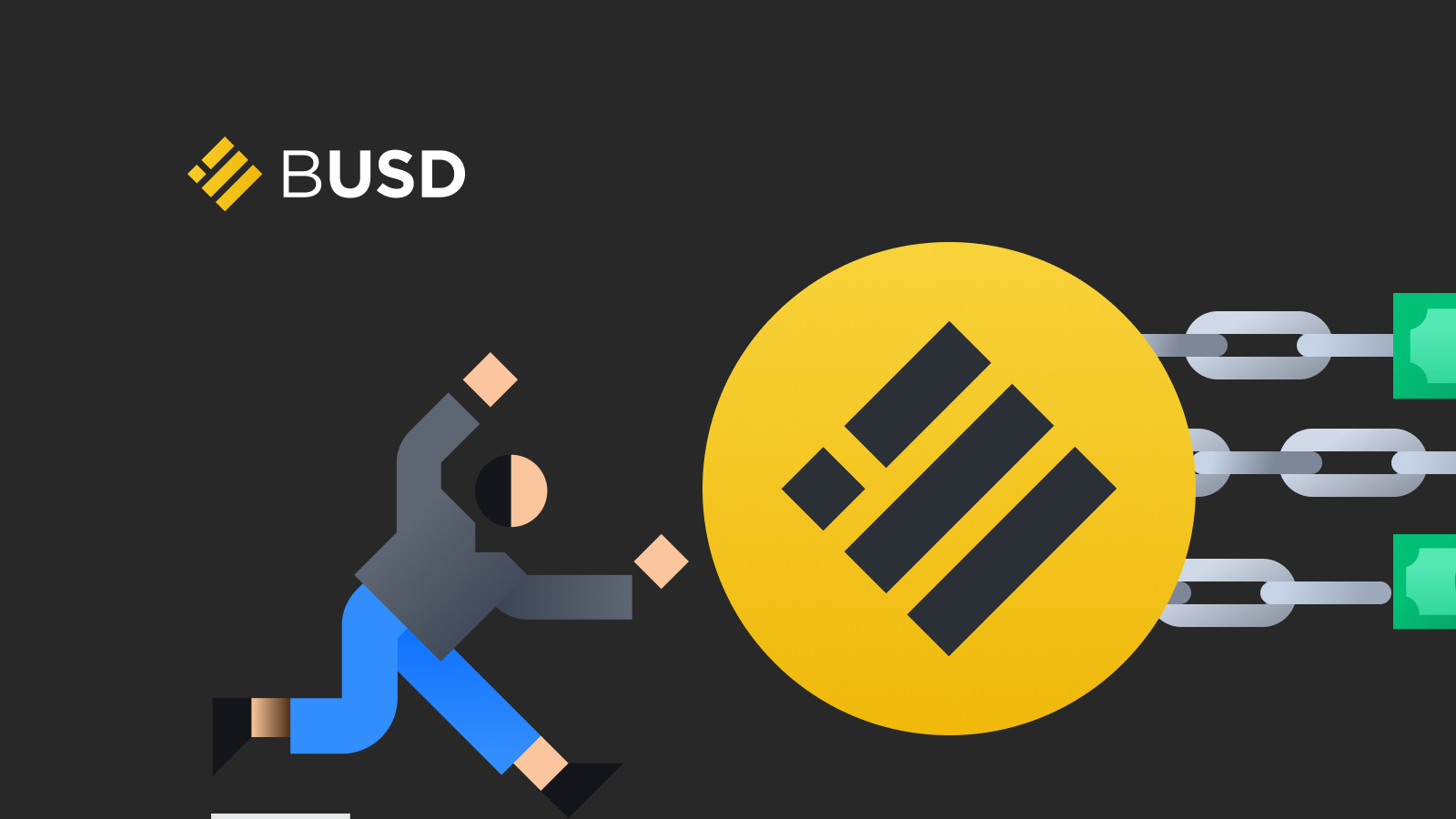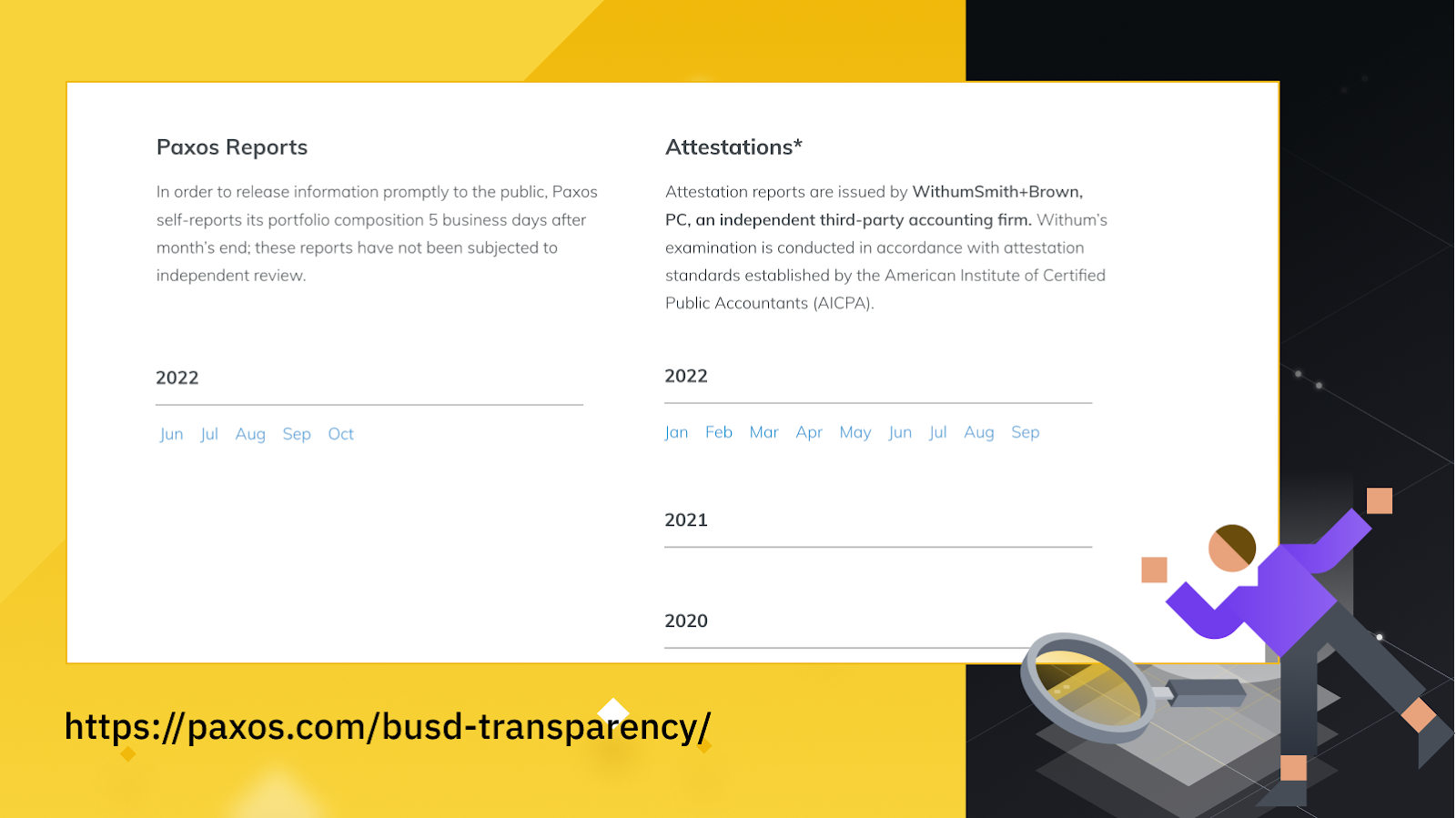Understanding BUSD and Binance-Peg BUSD
BUSD Transparency
BUSD is a stablecoin pegged to the US Dollar (USD) and issued by Paxos with branding support from Binance. It is approved by the New York Department of Financial Services (NYDFS), a regulator known throughout the finance industry for applying exceptionally rigorous standards to the entities and products it oversees. The asset is always available for purchase and redemption at a rate of 1 BUSD to 1 USD.
BUSD is designed with three key areas in mind: high-quality reserves, audits, and regulation. Well-designed stablecoins should only be backed by cash and short-term US Treasuries with a maturity of fewer than 90 days. To ensure maximum transparency, monthly reserve attestation reports & monthly holding reports are provided, allowing anyone to verify that BUSD is 100% backed by cash or cash equivalents.
In accordance with strict custody regulations enforced by the New York state regulators, Paxos’ BUSD reserves are only held in FDIC-insured, bankruptcy-remote bank accounts or US Treasury instruments.
Customer assets are thus protected from bankruptcy and kept separate from corporate funds. As the assets are fully segregated, users do not need to worry about the issuer becoming insolvent - the assets will return to their rightful owners even in that unlikely event.
Along with Paxos issuing BUSD on the Ethereum blockchain, Binance offers a wrapped BUSD token, called Binance-Peg BUSD, that runs on several other blockchain networks, including BNB Chain, Avalanche, and Polygon.
How does Binance-Peg BUSD work on multiple chains?
BUSD is natively issued on Ethereum, thus limiting its usage outside of the Ethereum ecosystem. In order to extend BUSD’s utility to other blockchains, Binance offers a wrapped version of the stablecoin, Binance-Peg BUSD, which is designed to track the value of the original, ERC-20 BUSD at a 1:1 ratio. “Wrapping” tokens is blockchain lingo for creating versions of the original asset that are transportable to other chains for the sake of increasing interoperability and the interconnectedness of the digital asset space. Normally, the value of wrapped tokens is secured by locking the collateral of the original asset, which is the case with Binance-Peg BUSD.
There is $23.4 billion worth of BUSD in circulation as of November 15, 2022, according to Etherscan, including 5.3 billion BUSD locked on the Ethereum network. At the same time, roughly 5.3 billion Binance-Peg BUSD is issued on different networks, including 4.85 billion on BNB Chain, 9.5 million on Avalanche, and 4 million on Polygon. That the amount of the native, ERC-20-based BUSD locked on Ethereum is close to the amount of Binance-Peg BUSD in circulation is not a coincidence. As the below section explains in more detail, to create a wrapped BUSD token, Binance must first lock a regular BUSD on its native blockchain. Anyone can visit the proof of assets webpage for an on-chain check.

How to ensure Binance-Peg BUSD is fully backed by reserves?
How can users be sure that the value of Binance-Peg BUSD tokens is equally protected? That’s simple: each Binance-Peg BUSD token that Binance mints correspond to a BUSD token held in reserve by its issuer – Paxos. BUSD (ERC-20) and Binance-Peg BUSD holders can swap their tokens between the blockchains freely. In sum, each Binance-Peg BUSD token represents the value of a native BUSD custodied outside of Binance, meaning that its value is secured by the same robust protection mechanisms that make BUSD one of the most reliable stablecoins on the market.
Disclaimer: BUSD is issued on Ethereum by Paxos and regulated by the NYDFS. Binance provides the pegged token service to lock BUSD on Ethereum and issues an equivalent amount of Binance-Peg BUSD on other networks. Check out the proof of assets (Proof of Collateral for B-Tokens) for more details. Please note that Binance-Peg BUSD is a Binance product. It is not issued by Paxos nor regulated yet by the NYDFS.

